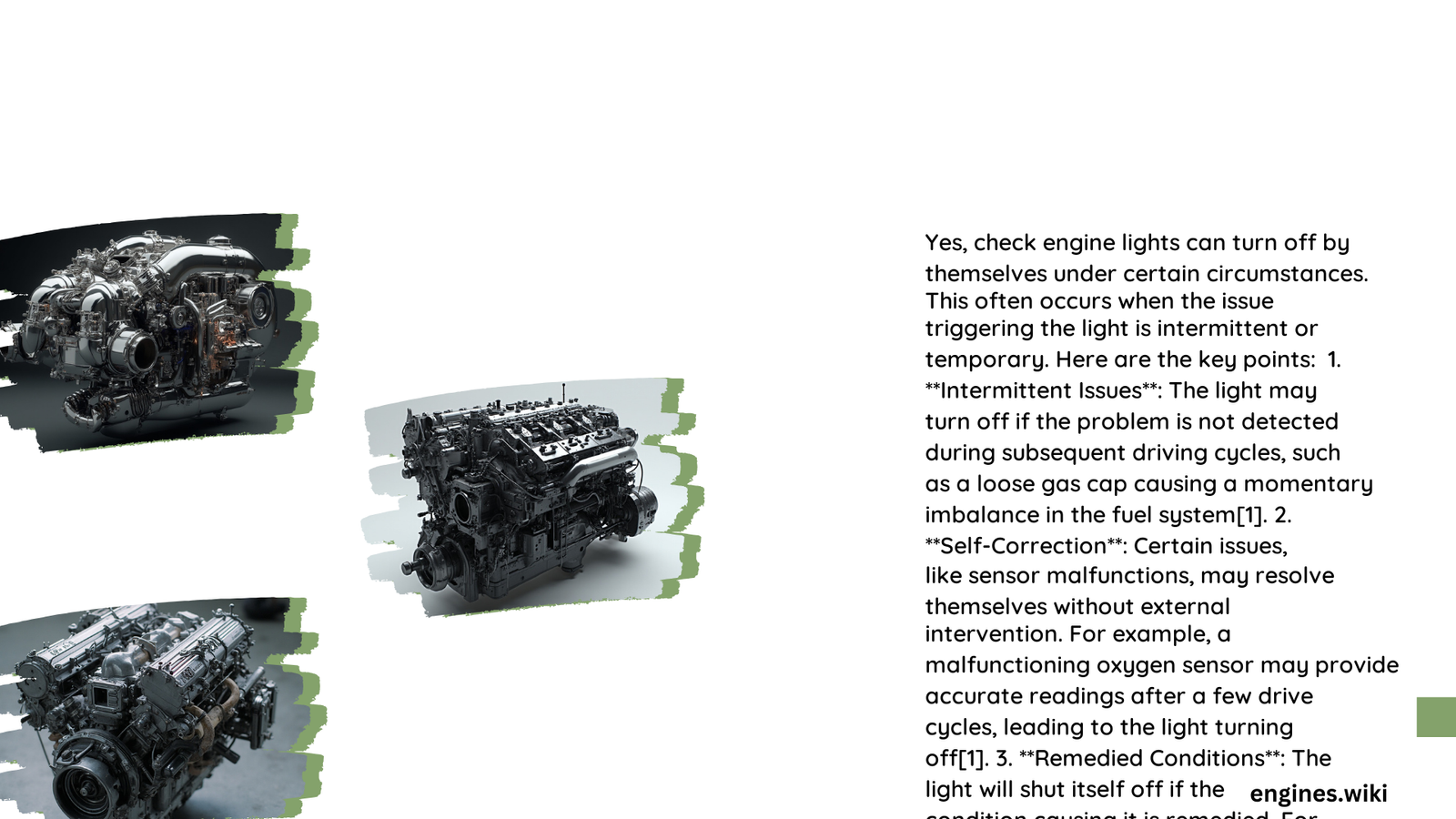Modern vehicles are equipped with sophisticated onboard diagnostic systems that can detect and sometimes self-resolve minor mechanical and electrical issues. When a check engine light appears, it doesn’t always indicate a permanent problem. In many cases, these warning lights can turn off by themselves due to temporary sensor malfunctions, intermittent electrical issues, or self-correcting system conditions. Understanding these nuanced scenarios helps vehicle owners distinguish between minor glitches and serious mechanical problems.
What Triggers Automatic Check Engine Light Shutdown?
Check engine lights can turn off by themselves under specific circumstances. These scenarios depend on various factors like driving conditions, vehicle systems, and the nature of the detected issue.
Can Temporary Issues Cause Self-Resolution?
Temporary or intermittent problems often trigger check engine lights that subsequently turn off without intervention. Common examples include:
- Loose Gas Cap: A momentarily loose fuel cap can trigger the light
- Sensor Fluctuations: Oxygen or temperature sensors experiencing brief malfunctions
- Electrical System Glitches: Momentary electrical connection interruptions
How Do Environmental Conditions Impact Light Behavior?
Environmental factors play a significant role in check engine light behavior:
| Condition | Potential Impact | Light Resolution Probability |
|---|---|---|
| High Altitude | Sensor Performance Variation | Medium |
| Extreme Temperatures | Electronic System Stress | High |
| Humidity Levels | Electrical Component Sensitivity | Low-Medium |
What Determines the Duration of Check Engine Light?
The onboard diagnostic (OBD) system follows a specific protocol for managing warning lights:
- Initial Detection: System identifies potential issue
- Verification Cycle: Checks if problem persists across multiple drive cycles
- Code Storage: Maintains diagnostic trouble codes (DTCs)
- Potential Self-Resolution: Light may turn off after 3-10 drive cycles
Are Some Vehicle Systems More Prone to Self-Correction?
Different vehicle systems exhibit varying self-correction capabilities:
- Modern Fuel-Injected Engines: Higher likelihood of automatic recalibration
- Hybrid Vehicles: Advanced diagnostic systems with complex self-monitoring
- Older Mechanical Systems: Limited self-correction potential
Can Professional Diagnostic Tools Help?
While some issues resolve automatically, professional diagnostic tools provide comprehensive insights:
- OBD-II Scanners: Detailed code reading and potential reset
- Manufacturer-Specific Diagnostic Equipment: Advanced system analysis
- Professional Mechanic Evaluation: Comprehensive system diagnosis
What Should Drivers Do When Check Engine Light Turns Off?
Even if the light disappears, recommended actions include:
- Monitor vehicle performance
- Check for recurring symptoms
- Conduct periodic diagnostic scans
- Maintain regular vehicle maintenance schedule
Key Takeaways

- Check engine lights can turn off automatically under specific conditions
- Temporary issues often resolve without external intervention
- Professional diagnostic tools provide deeper system insights
- Regular maintenance remains crucial for vehicle health
Warning Signs Requiring Immediate Attention
While some check engine lights self-resolve, certain symptoms demand immediate professional evaluation:
- Persistent performance issues
- Unusual engine noises
- Significant power loss
- Repeated warning light appearances
Technical Insights
Modern vehicle diagnostic systems represent complex technological ecosystems. The ability to self-diagnose and potentially self-correct demonstrates the advanced engineering behind contemporary automotive design.
Conclusion
Understanding check engine light behavior empowers vehicle owners to make informed maintenance decisions. While self-resolution occurs, consistent professional monitoring ensures long-term vehicle reliability.
